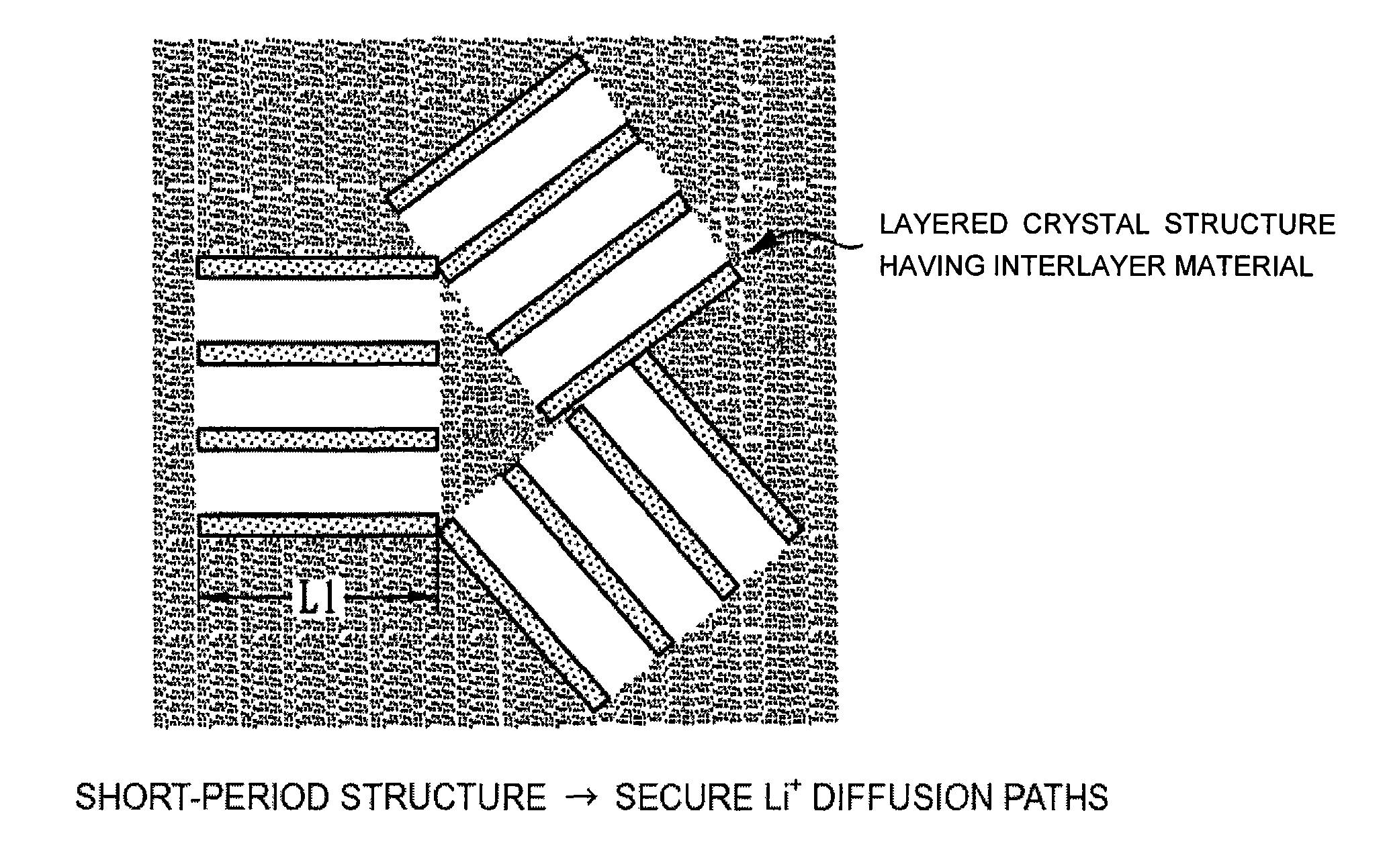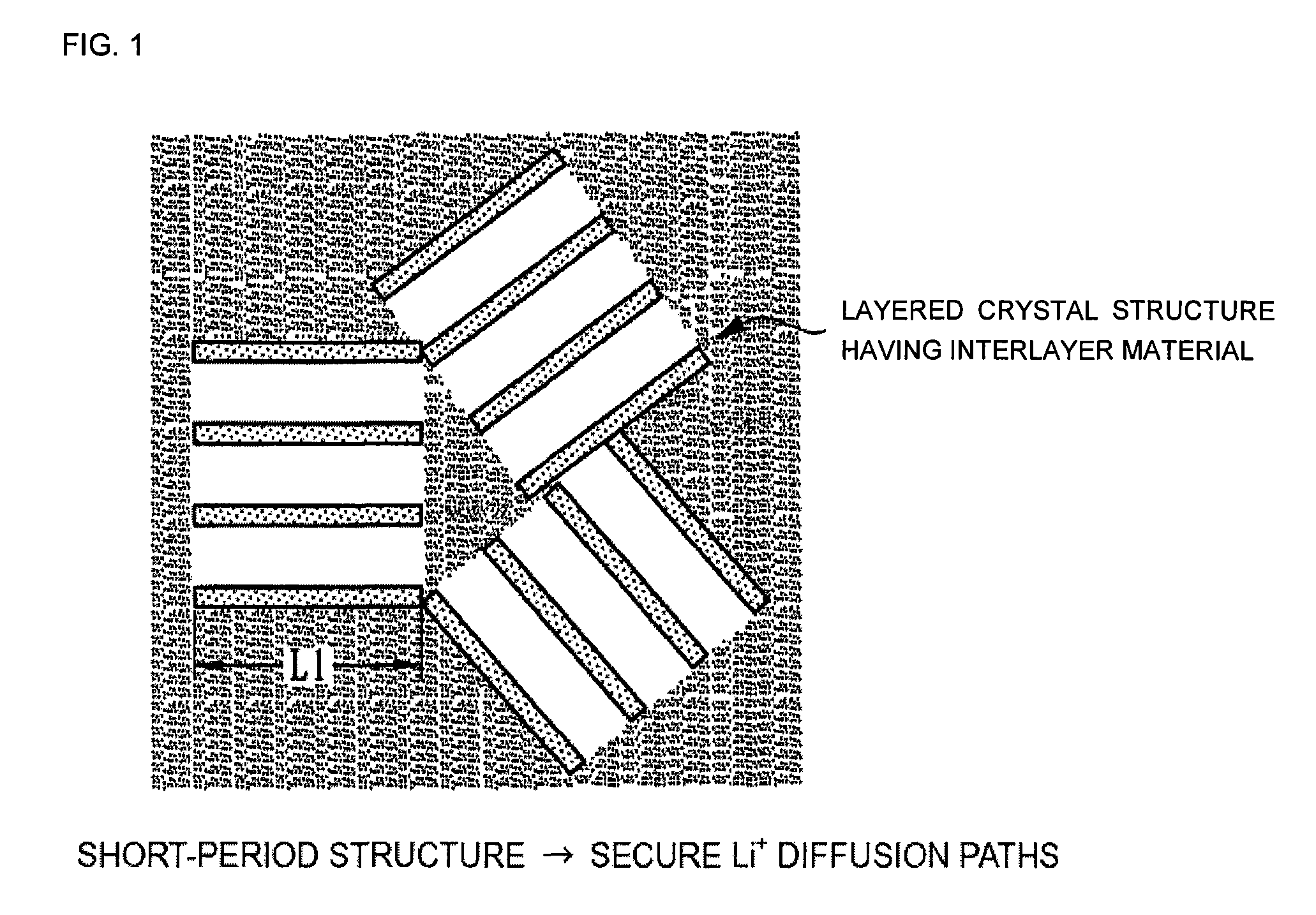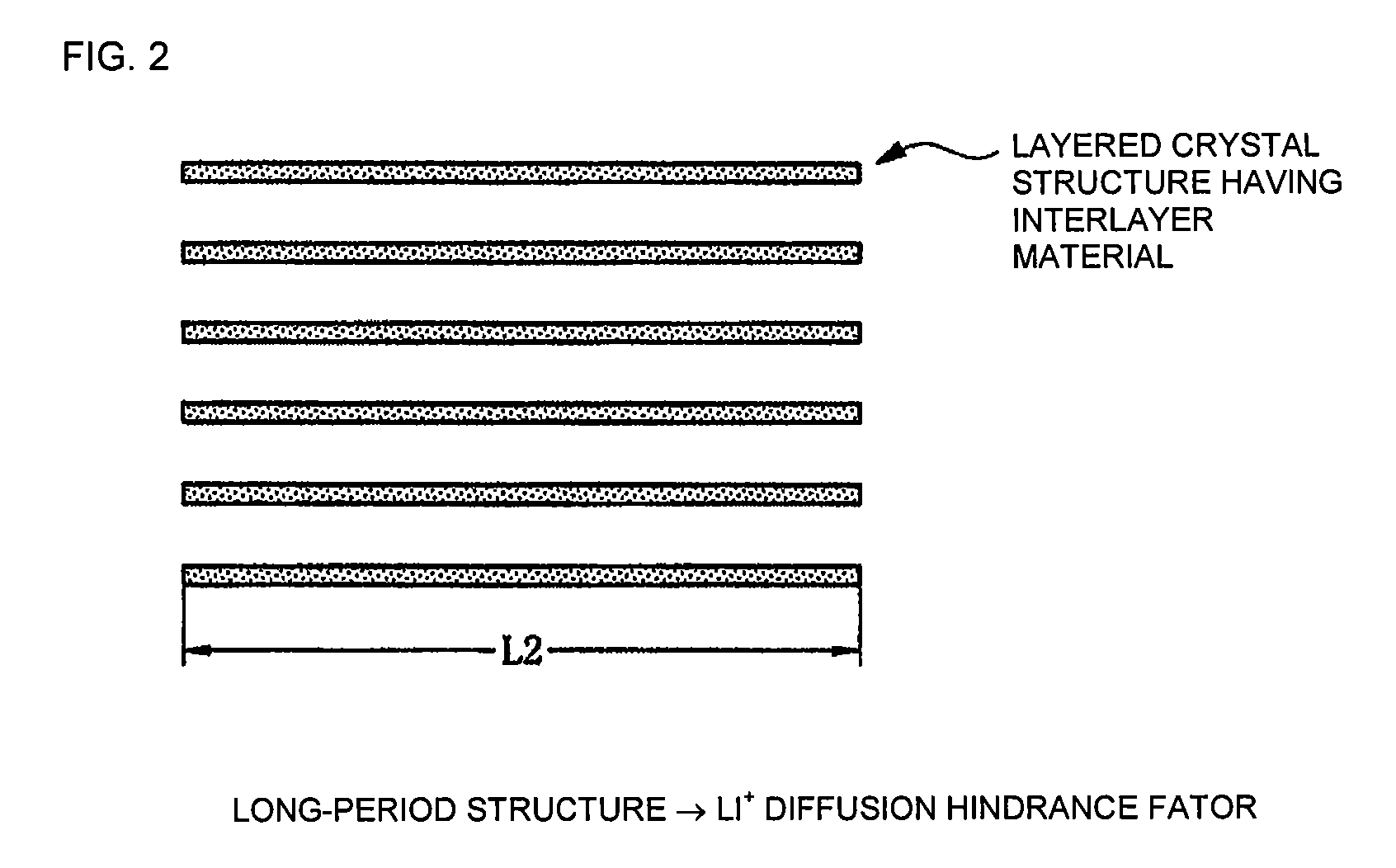Electrode material, method of manufacturing thereof and nonaqueous lithium secondary battery
a technology of electrolyte materials and secondary batteries, applied in the field of electrolyte materials, method of manufacturing thereof, and nonaqueous lithium secondary batteries, can solve the problems of slowing down of battery capacity gradually and unsatisfactory improvement effect, and achieve the effect of improving battery capacity and cycle characteristics
- Summary
- Abstract
- Description
- Claims
- Application Information
AI Technical Summary
Benefits of technology
Problems solved by technology
Method used
Image
Examples
example 1
[0081]In this example, 2.0 g of vanadium pentoxide (V2O5) as a layered crystalline material, 0.3 g of lithium sulfide (Li2S) as a water-soluble lithium source, and 1.0 g of 3,4-ethylene dioxythiophene (EDOT) as a monomer of a sulfur-containing organic conductive polymer were suspended in 50 ml of water.
[0082]The suspension liquid was heated with stirring under reflux for 24 hours. After the stirring ends, it was sucked and filtered to remove the solid content therefrom. The removed solid content included sulfur and a polymer of 3,4-ethylene dioxythiophene. The filtrate from which the solid content had been removed was concentrated under reduced pressure in conditions of 75° C. and 10.67 kPa (80 Torr). Water, organic material and any extra sulfur component were removed from the resulting filtrate to thereby obtain a black solid. The thus obtained product was vacuum-dried at 100° C.
[0083]The material having been vacuum dried was analyzed by X-ray diffraction (XRD), and the results of ...
example 2
[0087]In this example, 500 ml of 10% H2O2 was added to 5 g of vanadium pentoxide at room temperature. The produced vanadium pentoxide solution of red orange color was concentrated and solidified at 45° C. under reduced pressure. Then, the resultant was vacuum-dried at 150° C. to obtain a solid of 4.3 g. The solid had a red orange color.
[0088]The material was analyzed by X-ray diffraction method, and the results of the analysis are shown in FIG. 9. As seen from the figure, a weak diffraction line diffracted at the (001) lattice plane was observed at a point near 2θ=7°. In the analysis by transmission electron microscope, it was confirmed from FIG. 10 that layered fine crystal particles of which layer lengths range from 5 nm to 10 nm were 99% in terms of area ratio. The material was pulverized into fine particles, which were sifted out and classified.
[0089]A positive electrode was manufactured using that material as in Example 1. The negative electrode and the electrolyte solution wer...
PUM
| Property | Measurement | Unit |
|---|---|---|
| length | aaaaa | aaaaa |
| length | aaaaa | aaaaa |
| molar ratio | aaaaa | aaaaa |
Abstract
Description
Claims
Application Information
 Login to View More
Login to View More - R&D
- Intellectual Property
- Life Sciences
- Materials
- Tech Scout
- Unparalleled Data Quality
- Higher Quality Content
- 60% Fewer Hallucinations
Browse by: Latest US Patents, China's latest patents, Technical Efficacy Thesaurus, Application Domain, Technology Topic, Popular Technical Reports.
© 2025 PatSnap. All rights reserved.Legal|Privacy policy|Modern Slavery Act Transparency Statement|Sitemap|About US| Contact US: help@patsnap.com



